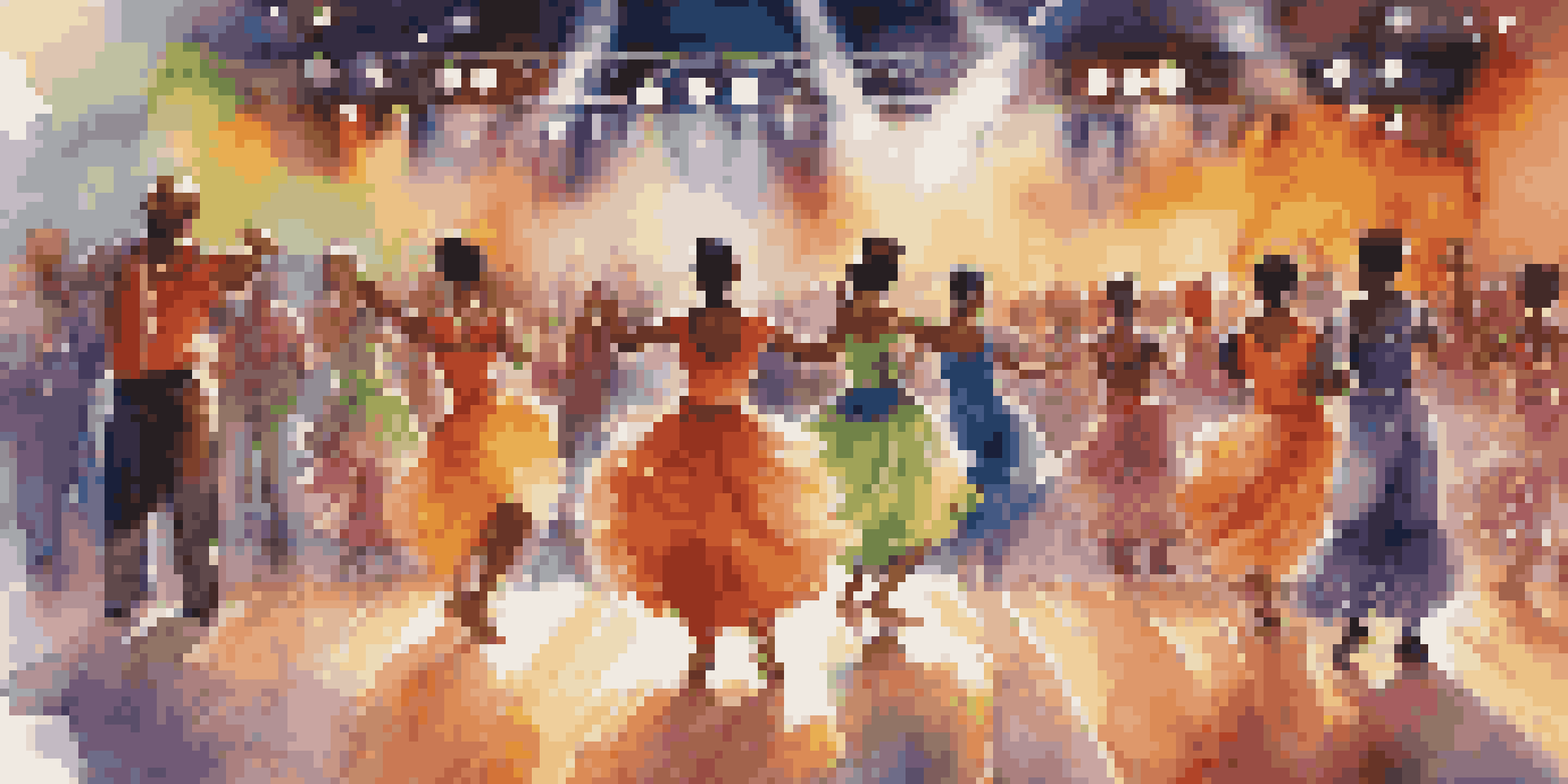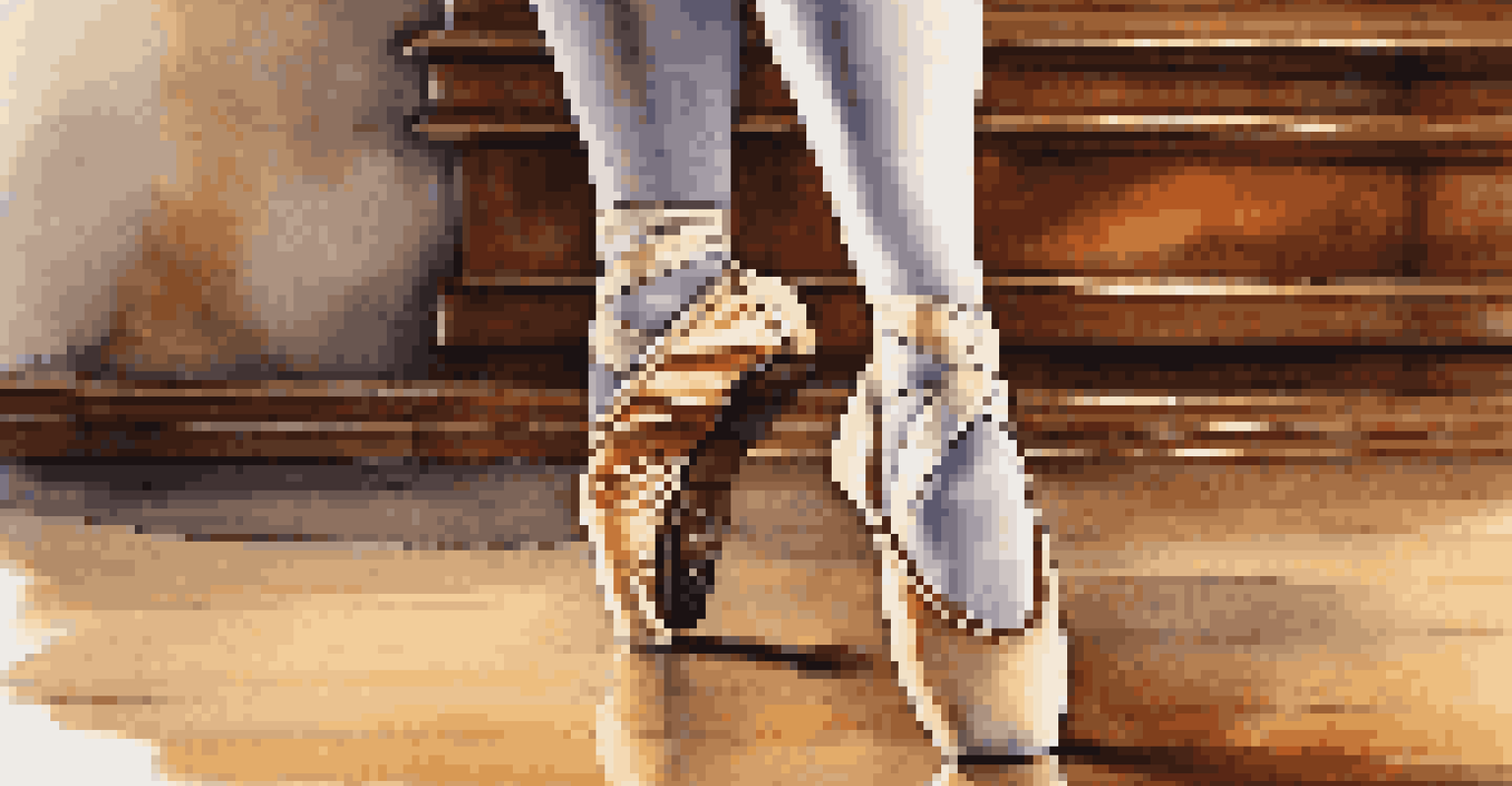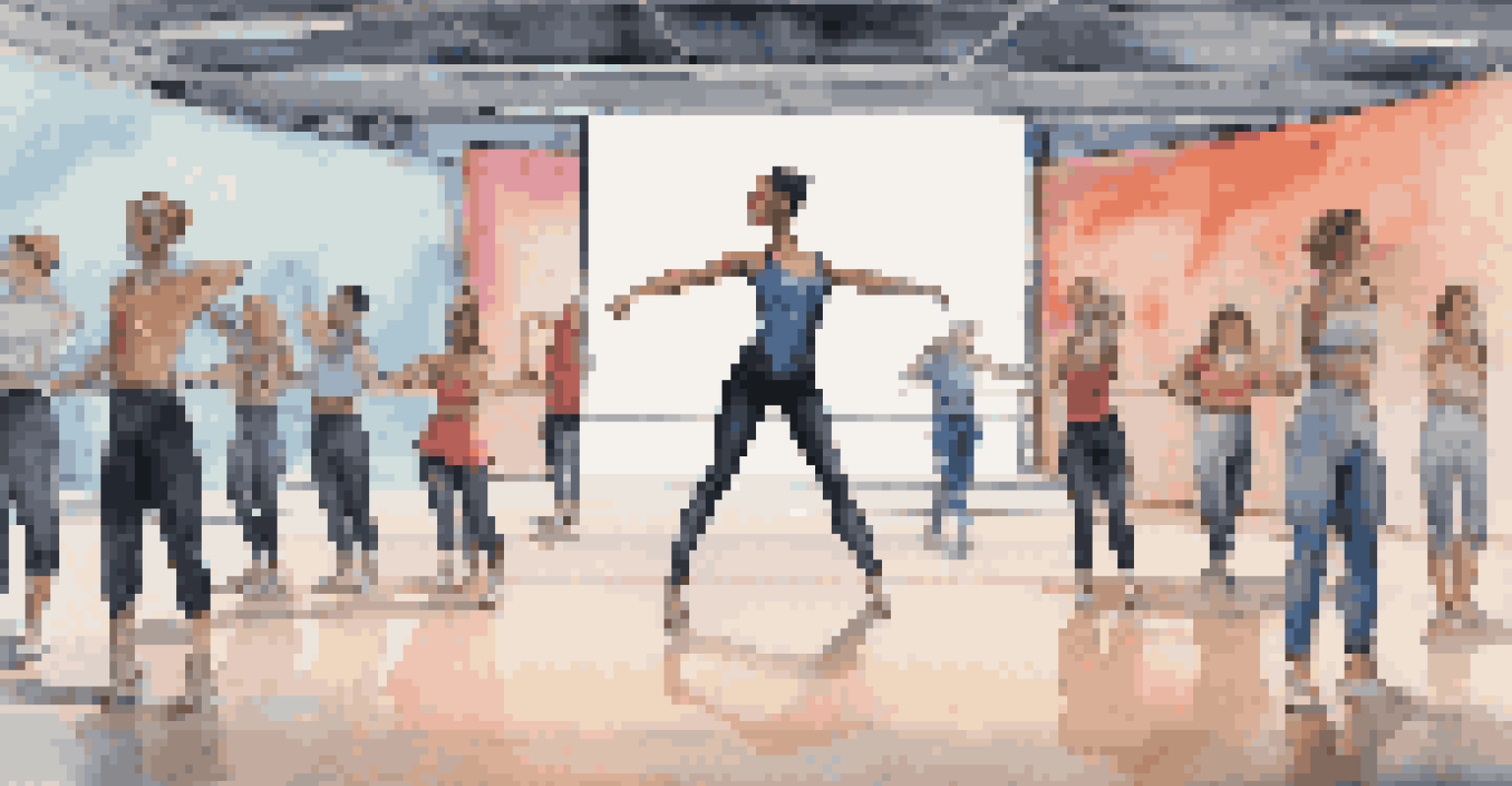Globalization and the Standardization of Dance Competitions

Understanding Globalization in Dance Competitions
Globalization refers to the interconnectedness of cultures, economies, and societies, and it plays a significant role in shaping various art forms, including dance. In the context of dance competitions, this phenomenon has led to the spread of certain styles and standards across borders. Dancers from diverse backgrounds now find themselves competing in environments that blend traditional elements with global influences.
Dance is the hidden language of the soul.
For example, a salsa dancer from Cuba may encounter competitors influenced by American hip-hop or European ballroom styles. This melting pot effect can enrich performances but also creates a competitive landscape where uniformity often trumps individuality. As events become more international, the criteria for judging may also shift to accommodate a broader audience.
Ultimately, understanding globalization's impact on dance competitions is crucial for dancers and choreographers aiming to navigate this evolving scene. By recognizing these trends, they can adapt their styles while staying true to their roots, ensuring their performances resonate with both local and global audiences.
The Rise of Standardization in Judging Criteria
As dance competitions grow in popularity worldwide, standardization of judging criteria has become increasingly important. This ensures that competitors are evaluated on a consistent basis, regardless of their geographic location. Organizations like the World Dance Council have introduced standardized rules to provide a level playing field for all participants.

However, standardization can also lead to concerns about creativity and self-expression being stifled. Dancers may feel pressured to conform to specific styles or techniques, which can diminish the unique qualities that make each dancer stand out. This tension between uniformity and individuality is a key challenge in the evolving landscape of dance competitions.
Globalization Shapes Dance Competitions
The interconnectedness of cultures influences dance styles and competition standards, creating a blend of traditional and global elements.
While standardization can enhance fairness, it’s essential to find a balance that allows for personal flair. Competitors and judges alike must recognize the value of diverse expressions within a standardized framework, ensuring that the essence of dance remains vibrant and varied.
Cultural Exchange and Its Influence on Dance Styles
Globalization encourages cultural exchange, which profoundly influences dance styles featured in competitions. Dancers are now exposed to a wide array of techniques and traditions from around the world, leading to innovative fusions. For instance, the blending of African dance with contemporary styles has created unique performances that celebrate both cultures.
The dance is a poem of which each movement is a word.
This cross-pollination can enhance creativity, pushing dancers to explore new movements and storytelling methods. Competitors are increasingly incorporating elements from various cultures into their routines, making performances richer and more engaging. The result is a dynamic dance scene that reflects the beauty of diversity.
However, it’s crucial for dancers to approach this cultural exchange with respect and awareness. Appropriating elements without understanding their origins can lead to controversy, so honoring the traditions while innovating is key to navigating this aspect of globalization.
The Role of Technology in Dance Competitions
Technology plays a pivotal role in the evolution of dance competitions, particularly through the rise of social media and online platforms. Dancers can now showcase their talents to a global audience, gaining exposure that was unimaginable just a few decades ago. This democratization of visibility has led to an influx of participants in competitions, as aspiring dancers seek recognition and opportunities.
Moreover, technology has transformed how competitions are organized and judged. Virtual competitions have become common, allowing dancers from different parts of the world to compete without the need for travel. This shift not only increases accessibility but also introduces new challenges in maintaining the integrity of judging standards.
Standardization vs. Individuality
While standardized judging criteria enhance fairness, they can also pressure dancers to conform, risking the loss of unique self-expression.
As technology continues to evolve, its influence on the dance competition landscape will undoubtedly grow. Dancers and organizers must be adaptable, embracing these changes while ensuring that the essence of dance remains intact, fostering community and connection through their art.
The Impact of Global Events on Dance Norms
Global events like the Olympics have a significant impact on dance norms, providing a platform for various dance styles to gain international recognition. These events often introduce competitive dance to broader audiences, leading to an increased interest in specific styles. As more viewers tune in, the demand for standardized performances rises, influencing how competitions are conducted worldwide.
For example, the inclusion of breakdancing in the upcoming Olympics has already shifted perspectives on urban dance styles. Competitors now feel a sense of validation, and the style is being taken more seriously in the competitive arena. This recognition can lead to increased funding and support for dancers, further professionalizing the field.
While global events can elevate dance as an art form, they also bring an emphasis on competition that may overshadow the joy of dance itself. Balancing the celebration of dance with the pressures of competition is essential for maintaining its artistic integrity.
Challenges of Maintaining Cultural Identity
As dance competitions become more standardized and globalized, maintaining cultural identity poses a significant challenge for many dancers. Traditional dance forms risk being overshadowed by more popular styles that dominate the competition scene. This shift can lead to a loss of cultural heritage if not addressed thoughtfully.
Dancers face the dilemma of wanting to compete at high levels while also honoring their unique backgrounds. Some may choose to incorporate their cultural dance elements into their routines, creating a bridge between tradition and modernity. This approach not only preserves cultural identity but also enriches the overall dance landscape.
Cultural Exchange Enriches Dance
Innovative fusions from cultural exchanges can enhance creativity in performances, but it’s vital to approach these influences with respect for their origins.
It’s essential for dancers, judges, and organizers to promote awareness and appreciation for diverse dance traditions. By encouraging the inclusion of unique cultural elements, competitions can celebrate the richness of global dance while fostering a sense of belonging for all participants.
Future Trends in Dance Competitions
Looking ahead, the future of dance competitions is likely to be shaped by ongoing globalization and technological advancements. We may see even more innovative formats emerge, blending live and virtual competitions to cater to a global audience. This evolution could provide opportunities for dancers to connect and collaborate, regardless of geographical barriers.
Moreover, as cultural awareness grows, competitions may increasingly prioritize diversity in judging criteria, allowing for a more holistic evaluation of performances. This shift would not only enhance the artistic integrity of competitions but also encourage a greater variety of styles to flourish.

Ultimately, the future of dance competitions holds exciting possibilities. By embracing globalization while respecting individual cultural identities, the dance community can continue to thrive, ensuring that the art form evolves meaningfully and inclusively.